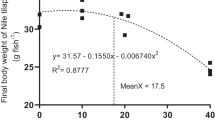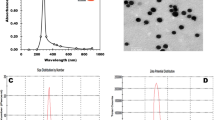Abstract
Previous studies have determined the effects of dietary selenium (Se) supplementation on selenoprotein N (SelN, SEPN1), selenophosphate synthetase-1 (SPS1), and selenocysteine-synthase (SecS) mRNA abundance in chicken skeletal and cardiac muscles. To investigate collective responses of these genes to dietary Se concentrations ranging from deficiency to moderately high level in muscle tissues of chicken, 1-day-old chickens were exposed to a diet of deficient Se and supplemented with Se (0.15 mg Se/kg and 1.50 mg Se/kg) as sodium selenite in the feed for 35 days. Muscle tissues (flight, breast, leg, and cardiac muscles) were collected and examined for Se content and mRNA levels of SelN on days 1, 15, 25, and 35 days, respectively. Moreover, SPS1 and SecS mRNA levels were analyzed. The results showed that the expression of SelN gene in cardiac muscle responded to dietary Se concentrations. SelN gene was downregulated in the Se deficiency group (L group), and upregulated in the Se excess group (H group) compared with the moderate Se group (M group) (P < 0.05) in cardiac muscle. Se deficiency mainly unregulated SelN mRNA level in skeletal muscles compared with M group. Excess dietary Se mainly resulted in the upregulation of SelN mRNA level in skeletal muscles compared with the M group. SecS mRNA levels responded to dietary Se concentrations showed a similar change compared with SelN in cardiac muscle. SPS1 mRNA levels responded to dietary Se concentrations showed a downregulation in L group and upregulation in H group. However, SelN mRNA levels displayed a different expression pattern in different skeletal and cardiac muscles. Moreover, Se also regulated the levels of SPS1 and SecS mRNAs. In summary, Se regulated the expression of SelN gene and affected the mRNA levels of SecS and SPS1. The level of Se in the feed may regulate SelN biosynthesis by affecting the levels of SPS1 and SecS mRNA.




Similar content being viewed by others
References
Rederstorff M, Krol A, Lescure A (2006) Understanding the importance of selenium and selenoproteins in muscle function. Cell Mol Life Sci 63:52–59
Avanzo JL, de Mendonca CX Jr, Pugine SM, de Cerqueira Cesar M (2001) Effect of vitamin E and selenium on resistance to oxidative stress in chicken superficial pectoralis muscle. Comp Biochem Physiol C Toxicol Pharmacol 129:163–173
Hassan S, Hakkarainen J, Jonsson L, Tyopponen J (1990) Histopathological and biochemical changes associated with selenium and vitamin E deficiency in chicks. Zentralbl Veterinarmed A 37:708–720
Walter ED, Jensen LS (1963) Effectiveness of selenium and non-effectiveness of sulfur amino acids in preventing muscular dystrophy in the turkey poult. J Nutr 80:327–331
Kryukov GV, Castellano S, Novoselov SV, Lobanov AV, Zehtab O, Guigo R, Gladyshev VN (2003) Characterization of mammalian selenoproteomes. Science 300:1439–1443
Lobanov AV, Hatfield DL, Gladyshev VN (2008) Reduced reliance on the trace element selenium during evolution of mammals. Genome Biol 9:R62
Petit N, Lescure A, Rederstorff M, Krol A, Moghadaszadeh B, Wewer UM, Guicheney P (2003) Selenoprotein N: an endoplasmic reticulum glycoprotein with an early developmental expression pattern. Hum Mol Genet 12:1045–1053
Turanov AA, Xu XM, Carlson BA, Yoo MH, Gladyshev VN, Hatfield DL (2011) Biosynthesis of selenocysteine, the 21st amino acid in the genetic code, and a novel pathway for cysteine biosynthesis. Adv Nutr 2:122–128
Zhang J, Li J, Zhang Z, Sun B, Wang R, Jiang Z, Li S, Xu S (2012) Ubiquitous expression of selenoprotein N transcripts in chicken tissues and early developmental expression pattern in skeletal muscles. Biol Trace Elem Res 146:187–191
Zhang JL, Li JL, Huang XD, Sun B, Wang RH, Li S, Xu SW (2012) Dietary selenium regulation of transcript abundance of selenoprotein N and selenoprotein W in chicken muscle tissues. Biometals 25:297–307
Hasunuma R, Ogawa T, Kawanishi Y (1982) Fluorometric determination of selenium in nanogram amounts in biological materials using 2,3-diaminonaphthalene. Anal Biochem 126:242–245
Li JL, Ruan HF, Li HX, Li S, Xu SW, Tang ZX (2011) Molecular cloning, characterization and mRNA expression analysis of a novel selenoprotein: avian selenoprotein W from chicken. Mol Biol Rep 38:4015–4022
Sun B, Wang R, Li J, Jiang Z, Xu S (2011) Dietary selenium affects selenoprotein W gene expression in the liver of chicken. Biol Trace Elem Res 143:1516–1523
Pfaffl MW (2001) A new mathematical model for relative quantification in real-time RT-PCR. Nucleic Acids Res 29:e45
Li JL, Li HX, Li S, Jiang ZH, Xu SW, Tang ZX (2011) Selenoprotein W gene expression in the gastrointestinal tract of chicken is affected by dietary selenium. Biometals 24:291–299
Wang YX, Zhan XA, Zhang XW, Wu RJ, Yuan D (2011) Comparison of different forms of dietary selenium supplementation on growth performance, meat quality, selenium deposition, and antioxidant property in broilers. Biol Trace Elem Res 143:261–273
Wang YX, Zhan XA, Yuan D, Zhang XW, Wu RJ (2011) Influence of dietary selenomethionine supplementation on performance and selenium status of broiler breeders and their subsequent progeny. Biol Trace Elem Res 143:1497–1507
Zhou JC, Zhao H, Li JG, Xia XJ, Wang KN, Zhang YJ, Liu Y, Zhao Y, Lei XG (2009) Selenoprotein gene expression in thyroid and pituitary of young pigs is not affected by dietary selenium deficiency or excess. J Nutr 139:1061–1066
Huang JQ, Li DL, Zhao H, Sun LH, Xia XJ, Wang KN, Luo X, Lei XG (2011) The selenium deficiency disease exudative diathesis in chicks is associated with downregulation of seven common selenoprotein genes in liver and muscle. J Nutr 141:1605–1610
Barnes KM, Evenson JK, Raines AM, Sunde RA (2009) Transcript analysis of the selenoproteome indicates that dietary selenium requirements of rats based on selenium-regulated selenoprotein mRNA levels are uniformly less than those based on glutathione peroxidase activity. J Nutr 139:199–206
Ruan H, Zhang Z, Wu Q, Yao H, Li J, Li S, Xu S (2012) Selenium regulates gene expression of selenoprotein W in chicken skeletal muscle system. Biol Trace Elem Res 145:59–65
Wang R, Sun B, Zhang Z, Li S, Xu S (2011) Dietary selenium influences pancreatic tissue levels of selenoprotein W in chickens. J Inorg Biochem 105:1156–1160
Gao X, Xing H, Li S, Li J, Ying T, Xu S (2012) Selenium regulates gene expression of selenoprotein W in chicken gastrointestinal tract. Biol Trace Elem Res 145:181–188
Sunde RA, Raines AM, Barnes KM, Evenson JK (2009) Selenium status highly regulates selenoprotein mRNA levels for only a subset of the selenoproteins in the selenoproteome. Biosci Rep 29:329–338
Liu Y, Zhao H, Zhang Q, Tang J, Li K, Xia XJ, Wang KN, Lei XG (2012) Prolonged dietary selenium deficiency or excess does not globally affect selenoprotein gene expression and/or protein production in various tissues of pigs. J Nutr 142:1410–1416
Yu D, Li JL, Zhang JL, Gao XJ, Xu S (2011) Effects of dietary selenium on selenoprotein W gene expression in the chicken immune organs. Biol Trace Elem Res 144:678–687
Wu X, Wei C, Pan C, Duan Y, Huang K (2010) Regulation of expression and activity of selenoenzymes by different forms and concentrations of selenium in primary cultured chicken hepatocytes. Br J Nutr 104:1605–1612
Pagmantidis V, Bermano G, Villette S, Broom I, Arthur J, Hesketh J (2005) Effects of Se-depletion on glutathione peroxidase and selenoprotein W gene expression in the colon. FEBS Lett 579:792–796
Bermano G, Nicol F, Dyer JA, Sunde RA, Beckett GJ, Arthur JR, Hesketh JE (1995) Tissue-specific regulation of selenoenzyme gene expression during selenium deficiency in rats. Biochem J 311(Pt 2):425–430
Terry EN, Michal JJ, Hostetler CE, Kincaid RL (2009) Levels of mRNA for three selenoroteins in skeletal muscle of fetal and newborn pigs. Livest Sci 124:21–25
Bartholomew A, Latshaw D, Swayne DE (1998) Changes in blood chemistry, hematology, and histology caused by a selenium/vitamin E deficiency and recovery in chicks. Biol Trace Elem Res 62:7–16
Deniziak M, Thisse C, Rederstorff M, Hindelang C, Thisse B, Lescure A (2007) Loss of selenoprotein N function causes disruption of muscle architecture in the zebrafish embryo. Exp Cell Res 313:156–167
Jurynec MJ, Xia R, Mackrill JJ, Gunther D, Crawford T, Flanigan KM, Abramson JJ, Howard MT, Grunwald DJ (2008) Selenoprotein N is required for ryanodine receptor calcium release channel activity in human and zebrafish muscle. Proc Natl Acad Sci U S A 105:12485–12490
Arbogast S, Beuvin M, Fraysse B, Zhou H, Muntoni F, Ferreiro A (2009) Oxidative stress in SEPN1-related myopathy: from pathophysiology to treatment. Ann Neurol 65:677–686
Arbogast S, Ferreiro A (2010) Selenoproteins and protection against oxidative stress: selenoprotein N as a novel player at the crossroads of redox signaling and calcium homeostasis. Antioxid Redox Signal 12:893–904
Castets P, Lescure A, Guicheney P, Allamand V (2012) Selenoprotein N in skeletal muscle: from diseases to function. J Mol Med. doi:10.1007/s00109-012-0896-x
Hatfield DL, Carlson BA, Xu XM, Mix H, Gladyshev VN (2006) Selenocysteine incorporation machinery and the role of selenoproteins in development and health. Prog Nucleic Acid Res Mol Biol 81:97–142
Low SC, Harney JW, Berry MJ (1995) Cloning and functional characterization of human selenophosphate synthetase, an essential component of selenoprotein synthesis. J Biol Chem 270:21659–21664
Small-Howard A, Morozova N, Stoytcheva Z, Forry EP, Mansell JB, Harney JW, Carlson BA, Xu XM, Hatfield DL, Berry MJ (2006) Supramolecular complexes mediate selenocysteine incorporation in vivo. Mol Cell Biol 26:2337–2346
Xu XM, Carlson BA, Irons R, Mix H, Zhong N, Gladyshev VN, Hatfield DL (2007) Selenophosphate synthetase 2 is essential for selenoprotein biosynthesis. Biochem J 404:115–120
Xu XM, Carlson BA, Mix H, Zhang Y, Saira K, Glass RS, Berry MJ, Gladyshev VN, Hatfield DL (2007) Biosynthesis of selenocysteine on its tRNA in eukaryotes. PLoS Biol 5:e4
Lobanov AV, Hatfield DL, Gladyshev VN (2008) Selenoproteinless animals: selenophosphate synthetase SPS1 functions in a pathway unrelated to selenocysteine biosynthesis. Protein Sci 17:176–182
Li JL, Li HX, Gao XJ, Zhang JL, Li S, Xu SW, Tang ZX (2012) Priority in selenium homeostasis involves regulation of SepSecS transcription in the chicken brain. PLoS One 7:e35761
Acknowledgments
This study was supported by the Research Fund for the Doctoral Program of Higher Education (20122325110018), the National Natural Science Foundation of China (31272626; 30871902). The authors thank the members in the Veterinary Internal Medicine Laboratory at the College of Veterinary Medicine, Northeast Agricultural University for their help in analyzing the data.
Conflict of Interest
All authors declare that there are no conflicts of interest.
Author information
Authors and Affiliations
Corresponding authors
Additional information
All authors have read the manuscript and have agreed to submit it in its current form for consideration for publication in the Journal.
Rights and permissions
About this article
Cite this article
Zhang, Jl., Zhang, ZW., Shan, AS. et al. Effects of Dietary Selenium Deficiency or Excess on Gene Expression of Selenoprotein N in Chicken Muscle Tissues. Biol Trace Elem Res 157, 234–241 (2014). https://doi.org/10.1007/s12011-014-9893-y
Received:
Accepted:
Published:
Issue Date:
DOI: https://doi.org/10.1007/s12011-014-9893-y




